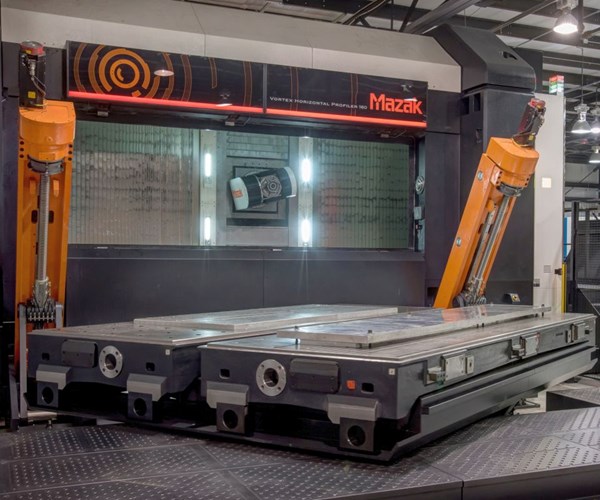What’s Behind Door Number Three?
While most shops are producing shorter aerospace parts on five-axis machines or larger parts on gantry-type equipment, this shop found its niche somewhere in the middle thanks to an advanced profiling machining system from Mazak.
Share



Takumi USA
Featured Content
View More




Hwacheon Machinery America, Inc.
Featured Content
View More

According to Greg Britton, CEO of Fort Walton Machining, the part-processing “sweet spot” for his company falls between five-axis machining centers and big, gantry-type machines. He says that most aerospace shops machining aircraft structural components can cut parts as long as 11 feet, but when it comes to sizes beyond that, a shop must make a committed effort to incorporate the necessary equipment: gantry-style machines that can accommodate parts ranging to 22 feet long. Unfortunately, he says these machines are expensive to operate, and the costs typically translate to higher part prices for customers.
Unwilling to settle on producing shorter parts or passing the buck, Mr. Britton searched for another option. Door number three, so to speak, was the Vortex Horizontal Profiler 160 from Mazak Corp. Its work envelope is designed specifically for the aerospace market with a work envelope that can accommodate about 70 percent of common, large-size airframe and aerospace parts. The number of shops that can cost-effectively process such parts is limited, the company says. Learn more in this case study.
Related Content
-
Inside a CNC-Machined Gothic Monastery in Wyoming
An inside look into the Carmelite Monks of Wyoming, who are combining centuries-old Gothic architectural principles with modern CNC machining to build a monastery in the mountains of Wyoming.
-
The Cut Scene: The Finer Details of Large-Format Machining
Small details and features can have an outsized impact on large parts, such as Barbco’s collapsible utility drill head.
-
Select Machining Technologies Highlights Multitasking Machines
IMTS 2024: Select Manufacturing Technologies is highlighting large-capacity multitasking machines from Solace, Geminis, Ibarmia and Momentum.
































.jpg;maxWidth=300;quality=90)


.jpg;maxWidth=970;quality=90)